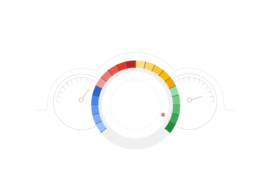Google Penguin, the latest in a number of updates to the Google search algorithm, was released in April 2012. In an attempt to improve the quality of the user experience, the world’s largest search engine specifically targeted websites that were operating in violation of the Google webmaster guidelines. Although the update focused on a number of questionable practices, one of the most affected centered on the quality of inbound links and whether they were deemed to have been gained from unnatural link building efforts.
The number and quality of inbound links have always played a significant role in determining the search engine rankings of individual sites. Many website owners were quick in their attempts to manipulate the organic rankings and set about getting links from anywhere they possibly could. Little thought went into whether or not the linking page was relevant or whether the link provided any useful information to visitors to the original site. Seemingly, even less thought was given as to the quality of the linking site. All that appeared to matter was the sheer number of inbound links. For a while, that assumption held true but the release of the Google Penguin update has stopped these manipulative practices in their tracks. The change in the search algorithm has left Google better equipped to detect attempts to manipulate search rankings. Sites that were clearly over-optimized in this manner were dealt a harsh blow in Penguin’s wake, with many sites who has previously enjoyed first page rankings being left stranded in the nether regions of the serps.
Inbound links are awarded a certain value based on several factors. The algorithm takes into account the authority level of page from which the link originates and the perceived relevance of the link to determine an overall quality score. Clearly, those site owners who had indulged in unscrupulous tactics to build a huge number of links with no thought to relevance were going to pay a similarly huge price. Those using paid blog networks were perhaps most severely affected. One such network, BuildMyRank, saw all their rankings drop overnight with a corresponding and catastrophic loss of search traffic. Forced to close down in the wake of the scandal, the site has promised a refund to all those customers affected.
The question remains as to what all those site owners are to do now. Do they simply start afresh with new websites and attempt to work their way back up to the top using a fresh focus on the new rules of SEO? In many cases, that approach would be costly, not to mention wholly impractical. Google has provided an online form for those who feel that they have been unfairly penalized by the update but it is probably fair to say that in most cases the punishment fits the crime. Is it better to admit your mistakes and try to get back in Google’s good books?
Internet marketing solutions company, Bruce Clay, Inc. points to the possibility that it is indeed possible to repair the damage caused by an overzealous link building strategy. Using a procedure they have coined “link pruning,” essentially referring to the removal of questionable inbound links, the company claims to have achieved notable success for several clients. Unsurprisingly, the service has been in high demand since Google Penguin came into play. For those site owners wishing to use the approach for themselves, the company has provided details of their four-step methodology for the identification and removal of damaging inbound links.
– Backlink Profile
Gaining a complete understanding of your backlink profile is the logical place to start. Use an up-to-date tool like Majestic SEO to build as complete an inventory as possible. Be aware of inaccuracies that may exist in the similar service provided in Google Webmaster Tools and avoid chasing inbound links that are no longer live.
– Rank Link Quality
Assign a value to each of the links you have identified in the inventory building stage. This is undoubtedly a time consuming process, but necessary nonetheless. After you have carried out sufficient analysis of domain names and anchor text, you will begin to get a clearer understanding of where you may have created unnatural or irrelevant links. You may use tools to help you automate the process but there will still need to be some decision making on your part as to what constitutes a low quality link.
– Create Link Pruning Records
Create and maintain a list of your link pruning efforts. It is suggested that you use column headers including target and source URLS, source ranks, source crawl date, anchor text, image link, alt text, no follow and frame information. You should also look to include contact information and a record of any ongoing correspondence.
– Removal
When the first three stages of the link pruning methodology have been completed, it is time to start sending removal requests to site owners you have identified. Be reasonable but firm that you would like the link pointing to your site removed. Give as much detail as possible as to the location and details of the links to make the task of removing it simple and quick for the owner of the originating site.
Site owners using this methodology should expect to go through several iteration of the process before seeing measurable results in terms of restored search engine ranking and improved levels of traffic. The good news is that there is a clear way back from the jaws of Google Penguin.
Give me a call if you need help with Link pruning services. Tel: 972.530.1600 x 115
Sources & Recommended Reading





